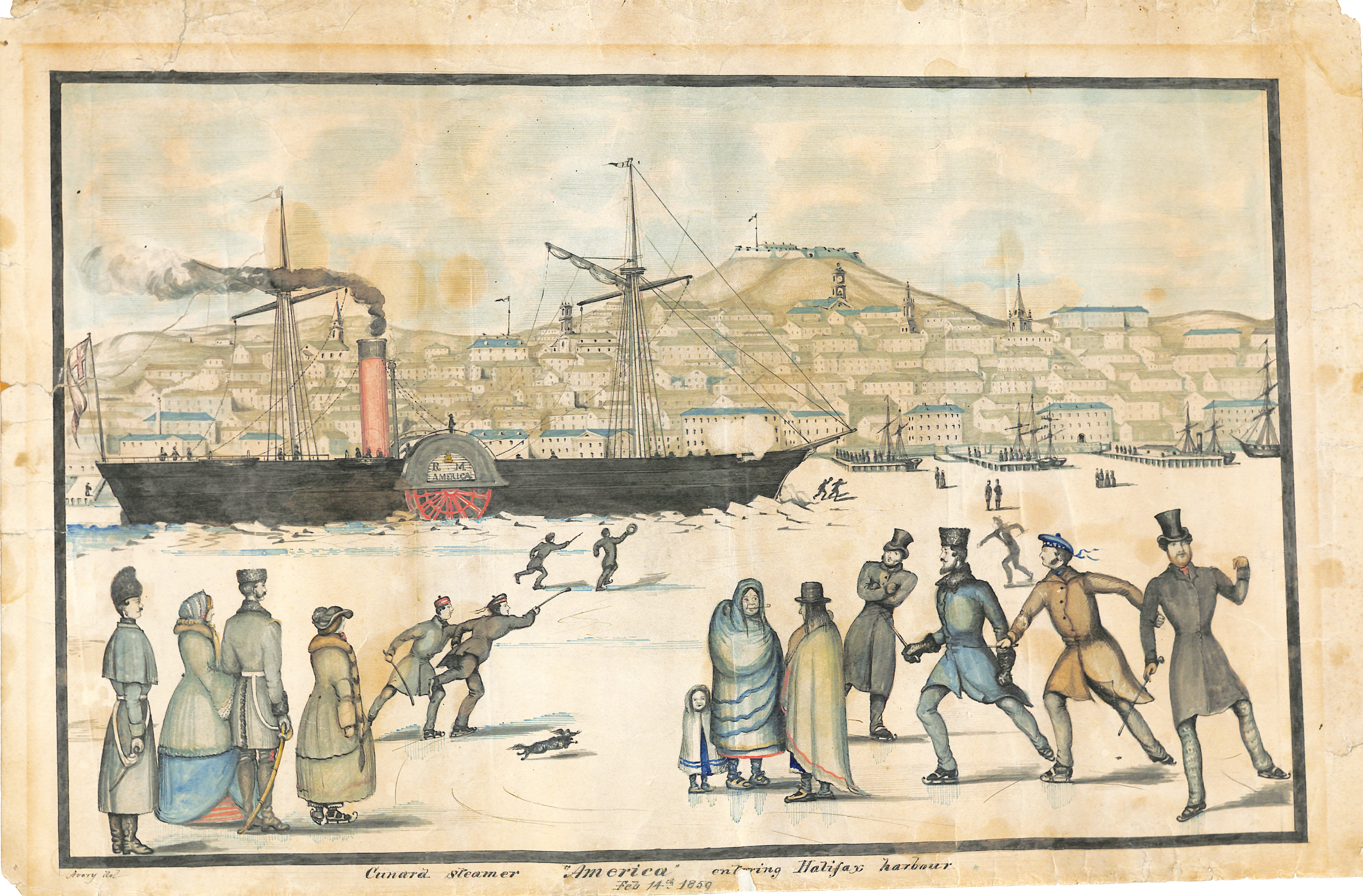
Photo — Courtesy of the Nova Scotia Museum, AN M2006.1
YCW Success Stories
Building (Sustainable) Careers in Heritage
Richard Archibald
“The collection I’ve been working on is quite varied, including everything from documentary sketches of rural landscapes to detailed illustrations of flowers by Nova Scotia’s early women botanists.” Clare notes that “these paintings give us a fascinating view of historical life in Nova Scotia, from both social and environmental perspectives.”
— Clare Sully-Stendahl, YCW intern
Every year, jobs funded by the Young Canada Works program — whether in the Building Careers in Heritage graduate internship stream or the Heritage Organizations (YCW-HO) stream for shorter-term or summer jobs — provide a valuable intake stream of labour and talent to Canada’s museum and heritage sector. Students hired for seasonal work may find a potential career path they had not previously considered, while graduates working internships receive valuable practical experience in the field and can form connections across the network of museum professionals they have joined.
Young Canada Works supports student jobs and graduate internships across the entire range of a heritage institution’s functions, from collections management to curatorial research to administration and more, and the variety of projects funded every year paints an evolving, up-to-date picture of the types of work museums take on. One of the more rewarding aspects of delivering the program is hearing success stories from participating museums and graduates.
Last year, the Nova Scotia Museum hired a YCW-BCH intern with a combined art-and-science educational background, tailor-made for a multifaceted project linking art, the environment and the digitization of a large painting collection to provide personal and professional access to an audience worldwide.
The museum decided to contribute to Watercolour World, a free international and digital database with a focus on watercolour paintings. The project considers the role of watercolour paintings in a pre-photography era of art but also as part of the historical record. Environmental researchers are then able to compare these paintings to later images of the same subjects to assess the effects of climate change.
Over 300 institutions worldwide have contributed to the project. In Canada this includes the Beaverbrook Art Gallery, Art Gallery of Ontario, Toronto Public Library, and Royal BC Museum to name a few. There are also works from private collections, for example the Hudson’s Bay Company Corporate Collection.
The digitization of the Nova Scotia Museum’s approximately 500 works of art is still in progress, as works need to be not only digitized and catalogued, but also tagged by the painting subject’s location.

Here is their success story, still ongoing, as told by the museum’s director Laura Bennett:
The Nova Scotia Museum chose to participate in the Watercolour World project following conversations with project organizers. We saw this project as an opportunity to digitize our pre-1900 historical watercolour painting collections (approximately 500 works of art) for online use and felt that the projects mission to increase research access to these collections internationally, as well as their application in documenting landscape changes as a result of climate change really resonated with our priorities.
We chose to hire a YCW intern for this position given the wonderful interns the program has yielded for us in the past. The program allows us to hire a post-graduate student who could bring their educational experience to the role and contribute to project direction. Clare Sully-Stendahl began her internship with us in November 2020. Clare’s background includes a BA Combined Honours in Contemporary Studies and Biology from King’s, and an MScR in Collections and Curating Practices in Edinburgh. Her background and main research interests are largely in art history, so this position was of particular interest to Clare given the overlaps between art history, environmental history, and collections management. Since joining our team, Clare has made wonderful strides in digitizing our watercolour collection and providing valuable insights which support this project. Clare was hired following a public competition that we advertised nationally in order to find an intern that would be a good fit for this project.
“The collection I’ve been working on is quite varied, including everything from documentary sketches of rural landscapes to detailed illustrations of flowers by Nova Scotia’s early women botanists.” Clare notes that “these paintings give us a fascinating view of historical life in Nova Scotia, from both social and environmental perspectives.”
The Nova Scotia Museum places a priority on the promotion of environmental sustainability. The museum has recently appointed a Climate Change Coordinator and is actively engaged in a climate adaptation project which seeks to identify risks to archaeological sites in the province. Curators have embedded work directly related to climate change into their research priorities and many Nova Scotia Museum sites have included information about the impacts of climate change on our province as part of their programming and interpretive offerings. A project like Watercolour World marries our priority of supporting climate change research with an opportunity to increase digital access to our collections. We are thrilled with the work that our intern Clare is doing, which supports both priorities. M
